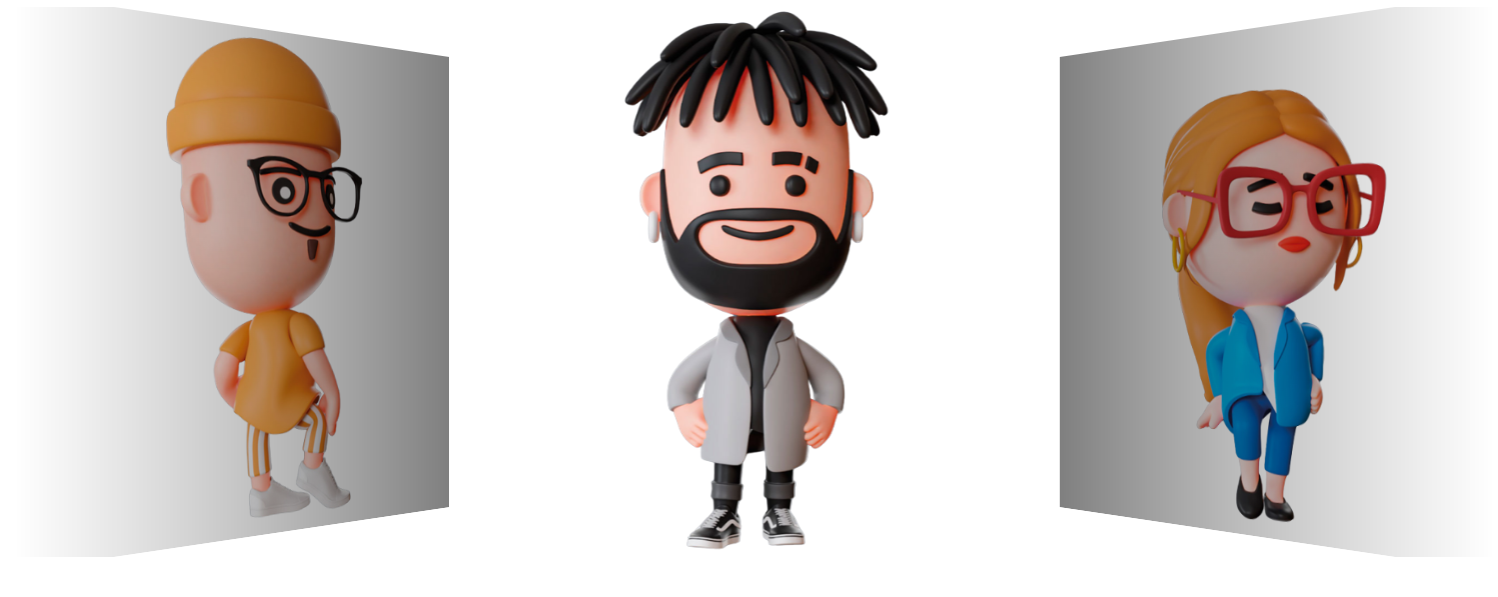The digital universe has marked a before and after. Not only has it improved people’s lives but it has also allowed for a drastic evolution in the world of work. Perhaps when we think of one of the most significant changes, telecommuting during the Covid-19 pandemic comes to mind, which became so popular. Now, the use of Artificial Intelligence (AI) is booming with the beloved and hated Chat GPT taking center stage, a virtual chat that seems to have the answer to everything.
However, there is a type of technology that, despite being used in various sectors for years, still needs more visibility. Yes, I am talking about Virtual Reality (VR) and Augmented Reality (AR). Both allow for completely immersive and gamified experiences in which we immerse ourselves in a parallel universe. One of the usual ways to enter a virtual room is with your own avatar, a three-dimensional element that simulates being a real person.
Virtual avatars represent a humanized representation of ordinary people. Their relevance in the technology sector is enormous, as they replace real people in their physical appearance, simulating their hair and eye color, body type, and way of dressing. They can also display interactions and non-verbal language, which is essential in any conversation. Thus, they allow the possibility of expressing oneself through gestures and emotions.
Metaverse virtual avatars are the necessary tool to represent people’s social identity and the means to socialize in the virtual room or web platform. They show our digital identity, which is entirely necessary in a globalized world, where, in many cases, only our virtual representation is known.
Avatars generate benefits that significantly enhance the virtual reality experience. They make it much more immersive and three-dimensional, as netizens can interact firsthand with other users. When we enter a virtual room, we decide our steps and attention. Therefore, the existing boundary between the real and the virtual dissipates.

Another advantage of using avatars is that they adapt to the latest trends in technology and the metaverse. Their goal is to try to represent people 100% as realistically as possible. That’s why they are beginning to incorporate the latest trends in hyper-realism and innovations in photogrammetry. Additionally, the inclusion of avatars in virtual rooms allows for storing a large amount of data about people’s needs and behaviors. This allows companies to generate much more personalized and three-dimensional activities prepared for the tastes of real people.
Creating a virtual avatar is not a simple task. It depends on many factors such as the platform in which it is used, the technology with which it will be carried out and the ultimate purpose it is intended for. For avatars to have the maximum possible customization, it is necessary to master three-dimensional work techniques (3D).
In Clon Digital, an augmented and virtual reality platform that works in both business and education, there is a collection of different avatars. Users who use it will be able to freely choose the avatar that best represents them to communicate and interact with other netizens in our virtual rooms. Therefore, Clon Digital is the platform that represents all people.
We live in an ever-evolving virtual environment. Therefore, at Clon Digital we are working on creating new avatars. Our goal is to make everyone happy, which is why these avatars adapt to social reality. We do not believe in previously established social roles or perfect bodies. Each person chooses who they want to be. That’s why Clon Digital is a completely inclusive platform that respects all gender identities.
Clon Digital is the platform that represents all people. So, if you are interested in the metaverse world, do not hesitate to visit our existing avatars and our immense gallery of virtual rooms. Also, ask us all your questions and doubts. We will be happy to resolve them!
